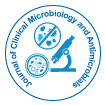

Commentary - (2023)Volume 7, Issue 2
Antibiotic resistance is a global health concern that poses a significant threat to public health. Over the past few decades, the misuse and overuse of antibiotics have accelerated the development of resistant bacteria, rendering many life-saving drugs ineffective. This phenomenon has led to an alarming rise in drug-resistant infections, longer hospital stays, increased healthcare costs, and, most critically, a higher mortality rate. To address this looming crisis, it is essential to understand the causes, consequences, and potential solutions to combat antibiotic resistance effectively.
Causes of antibiotic resistance
Antibiotic resistance arises primarily due to the selective pressure imposed on bacteria through the misuse and overuse of antibiotics. Factors contributing to this issue include the inappropriate prescription of antibiotics by healthcare providers, patient demand for antibiotics for viral infections, agricultural use of antibiotics in livestock farming, and inadequate infection prevention and control measures in healthcare settings. Additionally, the ease of global travel and trade facilitates the spread of resistant bacteria across borders, compounding the problem further.
Consequences of antibiotic resistance
The consequences of antibiotic resistance are far-reaching and affect individuals, communities, and healthcare systems worldwide. First and foremost, resistant infections are more challenging to treat, often requiring the use of more potent and costly antibiotics. Prolonged hospital stays, increased morbidity and mortality rates, and higher healthcare expenditures are common outcomes. Moreover, antibiotic resistance undermines many medical advances, such as organ transplants, cancer treatments, and surgeries that rely on the effectiveness of antibiotics to prevent and control infections. The economic burden of antibiotic resistance is significant, with estimates suggesting a global cost of trillions of dollars annually.
Potential solutions
Addressing antibiotic resistance requires a multi-faceted approach involving healthcare providers, policymakers, researchers, and the public. Firstly, optimizing the use of antibiotics is crucial. This involves promoting antimicrobial stewardship programs, which encourage judicious prescribing, appropriate dosing, and duration of treatment. Educating healthcare professionals and the public about the risks and benefits of antibiotics, as well as promoting alternatives to antibiotics when appropriate, can help reduce unnecessary antibiotic use.
Enhancing infection prevention and control practices in healthcare settings is another vital component of combatting antibiotic resistance. Stricter adherence to hand hygiene, proper sterilization of medical equipment, and implementing surveillance systems to detect and contain outbreaks of resistant bacteria can significantly reduce the transmission of infections.
Investing in research and development of new antibiotics and alternative treatment options is critical. Encouraging pharmaceutical companies to invest in antibiotic development, providing incentives for innovation, and supporting research into novel therapeutic approaches such as phage therapy, immunotherapies, and probiotics can help replenish the antibiotic pipeline and provide alternative strategies to combat resistant bacteria.
Improving global surveillance systems to monitor the spread of resistant bacteria and share data across borders is essential. International cooperation and collaboration are crucial in addressing antibiotic resistance as it is a global problem that requires a coordinated response.
Lastly, public awareness campaigns can play a vital role in combating antibiotic resistance. Educating the public about the appropriate use of antibiotics, the risks of misuse, and the importance of completing prescribed courses of treatment can help reduce demand for unnecessary antibiotics and promote responsible antibiotic use.
Citation: Tang Z (2023) Antibiotic Resistance: The Looming Crisis and Potential Solutions. J Clin Microbiol Antimicrob. 7:159.
Received: 05-Jun-2023, Manuscript No. JCMA-23-25525; Editor assigned: 08-Jun-2023, Pre QC No. JCMA-23-25525 (PQ); Reviewed: 23-Jun-2023, QC No. JCMA-23-25525; Revised: 30-Jun-2023, Manuscript No. JCMA-23-25525 (R); Published: 07-Jul-2023 , DOI: 10.35248/JCMA.23.7.159
Copyright: © 2023 Tang Z. This is an open-access article distributed under the terms of the Creative Commons Attribution License, which permits unrestricted use, distribution, and reproduction in any medium, provided the original author and source are credited.